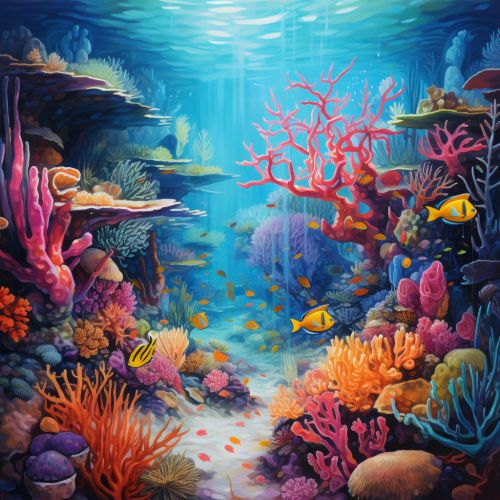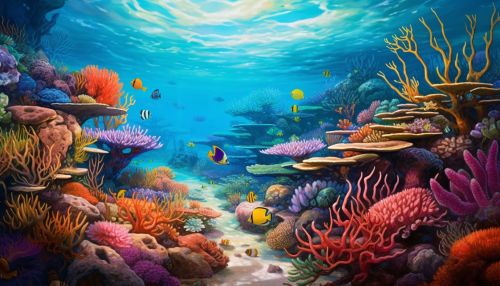Water ecosystem
Introduction
Water ecosystems, also known as aquatic ecosystems, are fundamental components of the Earth's biosphere. They encompass a diverse array of environments, including oceans, rivers, lakes, and wetlands, each with its unique set of organisms and ecological processes. Water ecosystems can be classified into two main types: marine (saltwater) and freshwater ecosystems.
Marine Ecosystems
Marine ecosystems cover approximately 71% of the Earth's surface and contain about 97.5% of the planet's water. They generate about half of the oxygen we breathe, absorb a significant portion of carbon dioxide emissions, and are home to a multitude of species.
Oceans
The ocean is the largest marine ecosystem, divided into different zones based on depth and distance from the shore. These zones include the intertidal zone, pelagic zone, abyssal zone, and benthic zone. Each zone has distinct characteristics and supports a variety of marine life forms.
Coral Reefs
Coral reefs are another important marine ecosystem, often referred to as the "rainforests of the sea" due to their high biodiversity. They provide shelter and food for a wide range of marine organisms and play a crucial role in carbon and nitrogen fixing.
Estuaries
Estuaries, where rivers meet the sea, are unique marine ecosystems characterized by brackish water. They serve as vital nurseries for many marine and bird species and act as a filter for pollutants from the land.
Freshwater Ecosystems
Freshwater ecosystems only make up about 0.8% of the Earth's surface, yet they are home to more than 100,000 known species, representing almost 10% of all known species on Earth.
Lakes and Ponds
Lakes and ponds are bodies of standing freshwater that support a variety of plants, invertebrates, fish, and birds. They are classified into three zones: the littoral zone, the limnetic zone, and the profundal zone.
Rivers and Streams
Rivers and streams are bodies of flowing freshwater. They are critical habitats for many species and play a significant role in the water cycle.
Wetlands
Wetlands are areas where water covers the soil or is present either at or near the surface of the soil all year or for varying periods of time during the year. They serve as natural water filters and flood control systems and are among the most productive ecosystems in the world.
Ecological Processes
Water ecosystems are dynamic and complex, with numerous ecological processes taking place. These include nutrient cycling, primary production, decomposition, and food web dynamics.
Threats and Conservation
Water ecosystems worldwide are under threat from various human activities, including pollution, overfishing, climate change, and habitat destruction. Conservation efforts are crucial to preserve these ecosystems and the services they provide.


